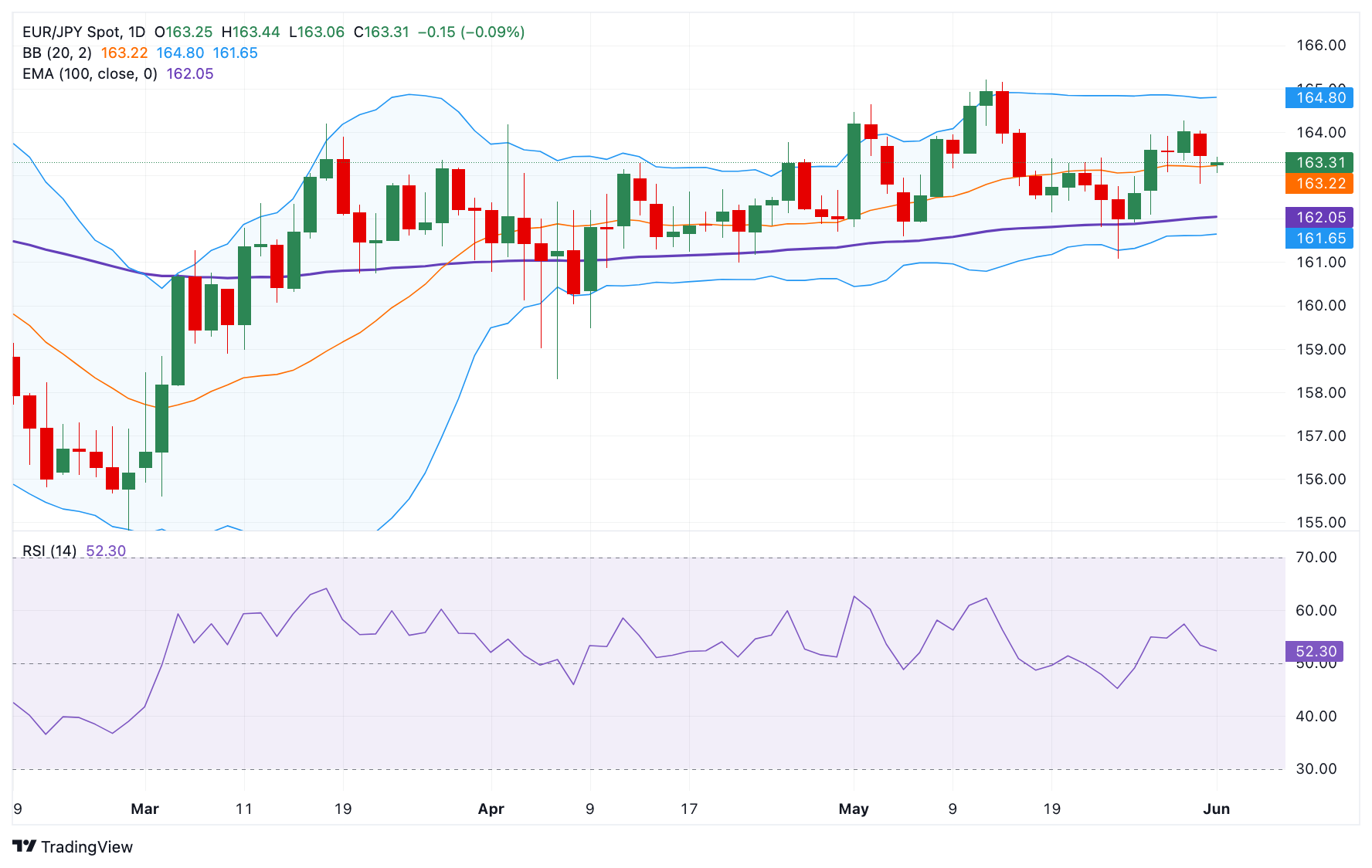EUR/JPY Price Forecast: Bullish outlook remains in play above 163.00
- EUR/JPY attracts some sellers to near 163.15 in Monday’s early European session.
- The cross keeps bullish vibe above the 100-day EMA, but further consolidation cannot be ruled out with neutral RSI indicator.
- The immediate resistance level is seen at 164.26; the initial support level is located at 162.81.
The EUR/JPY cross tumbles to around 163.15 during the early European session on Monday. The Japanese Yen (JPY) strengthens against the Euro (EUR) as persistent trade-related uncertainties and geopolitical risks further boost the safe-haven flows. Additionally, the rising bets that the Bank of Japan (BoJ) will continue raising interest rates this year contribute to the JPY’s upside.
According to the daily chart, the constructive outlook of EUR/JPY remains in place as the price holds above the key 100-day Exponential Moving Average (EMA). Nonetheless, further consolidation cannot be ruled out in the near term, with the 14-day Relative Strength Index (RSI) hovering around the midline. This suggests neutral momentum in the near term.
The first upside barrier for the cross emerges at 164.26, the high of May 29. Any follow-through buying could set the stage for another push toward 164.80, the upper boundary of the Bollinger Band. The next hurdle to watch is 165.21, the high of May 13.
On the flip side, the first downside target to watch is 162.81, the low of May 30. A clean break below the mentioned level could open the door for a drop toward 162.15, representing the low of May 19 and the 100-day EMA. The next contention level is located at 161.65, the lower limit of the Bollinger Band.
EUR/JPY daily chart

Japanese Yen FAQs
The Japanese Yen (JPY) is one of the world’s most traded currencies. Its value is broadly determined by the performance of the Japanese economy, but more specifically by the Bank of Japan’s policy, the differential between Japanese and US bond yields, or risk sentiment among traders, among other factors.
One of the Bank of Japan’s mandates is currency control, so its moves are key for the Yen. The BoJ has directly intervened in currency markets sometimes, generally to lower the value of the Yen, although it refrains from doing it often due to political concerns of its main trading partners. The BoJ ultra-loose monetary policy between 2013 and 2024 caused the Yen to depreciate against its main currency peers due to an increasing policy divergence between the Bank of Japan and other main central banks. More recently, the gradually unwinding of this ultra-loose policy has given some support to the Yen.
Over the last decade, the BoJ’s stance of sticking to ultra-loose monetary policy has led to a widening policy divergence with other central banks, particularly with the US Federal Reserve. This supported a widening of the differential between the 10-year US and Japanese bonds, which favored the US Dollar against the Japanese Yen. The BoJ decision in 2024 to gradually abandon the ultra-loose policy, coupled with interest-rate cuts in other major central banks, is narrowing this differential.
The Japanese Yen is often seen as a safe-haven investment. This means that in times of market stress, investors are more likely to put their money in the Japanese currency due to its supposed reliability and stability. Turbulent times are likely to strengthen the Yen’s value against other currencies seen as more risky to invest in.

